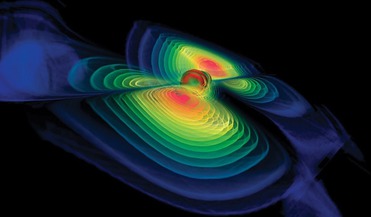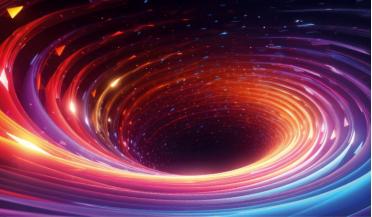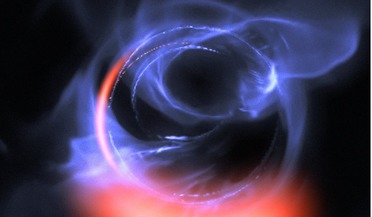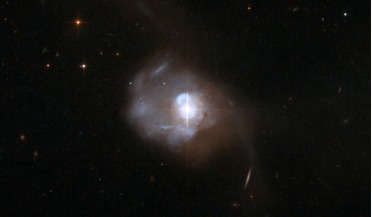 March 2016
Gravitational waves provide new window on the universe
March 2016
Gravitational waves provide new window on the universe
... the source. It is these ‘ripples’ of space-time that are detected as gravitational waves. These waves travel at the speed of light carrying information about their progenitor and they can also be produced by other violent events in the cosmos...
 April 2024
Rotation in the Universe
April 2024
Rotation in the Universe
... velocity of the star by a similar factor. But 100 km/s x 3000 is the speed of light, so even if we assume that as the velocity of the star approaches the speed of light the star gains mass in accordance with Einstein’s theory of relativity, it can...
 31 October 2018
Black hole status of the Milky Way centre confirmed with striking new data
31 October 2018
Black hole status of the Milky Way centre confirmed with striking new data
... fast moving material has been spotted racing around near its event horizon at about 30 percent the speed of light; this is the most detailed observations yet of material swirling around so close to a black hole at the point of no return...
 19 February 2020
Molecular oxygen detected for the first time in another galaxy
19 February 2020
Molecular oxygen detected for the first time in another galaxy
... at opposite ends from the disk at nearly the speed of light and it was within a high velocity molecular outflow ... of energetic particles which are ejected outwards at nearly the speed of light in opposite directions away from the disk. Earth has been...
 May 2022
Essential guide to the James Webb Space Telescope
May 2022
Essential guide to the James Webb Space Telescope
... year on year. Combined with the finite speed of light this wonderfully, serendipitously, turns our Universe into...be individually controlled, allowing astronomers to block out the light of interfering bright stars or focus on specific objects...
 January 2017
New oceans beckon for solar sail technology
January 2017
New oceans beckon for solar sail technology
...area, illuminated by a high power laser (around 60 GW) to accelerate a 1 gram-scale spacecraft to a significant percentage of the speed of light as a means of sending multiple robotic probes to nearby stars in decades, not millennia. While just about...